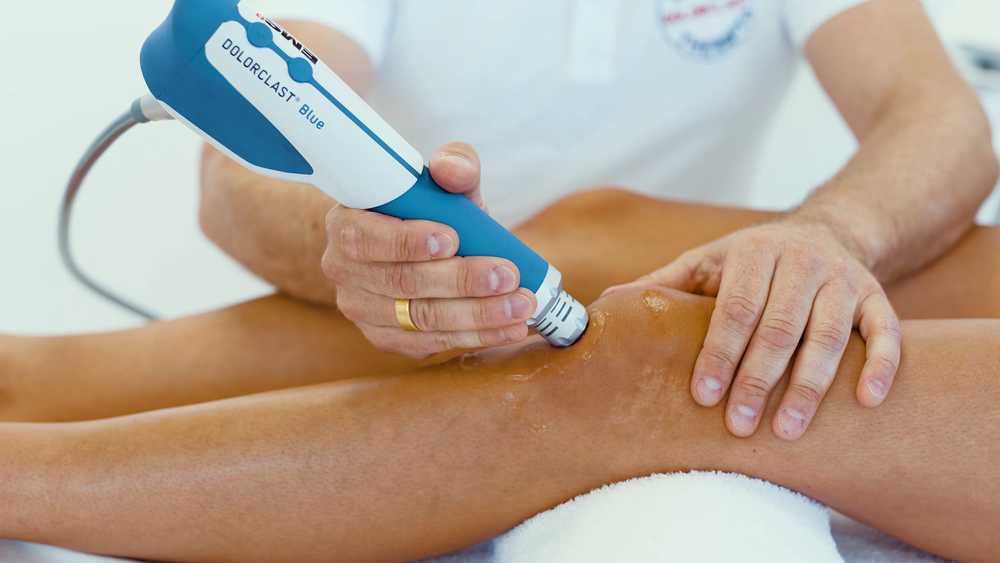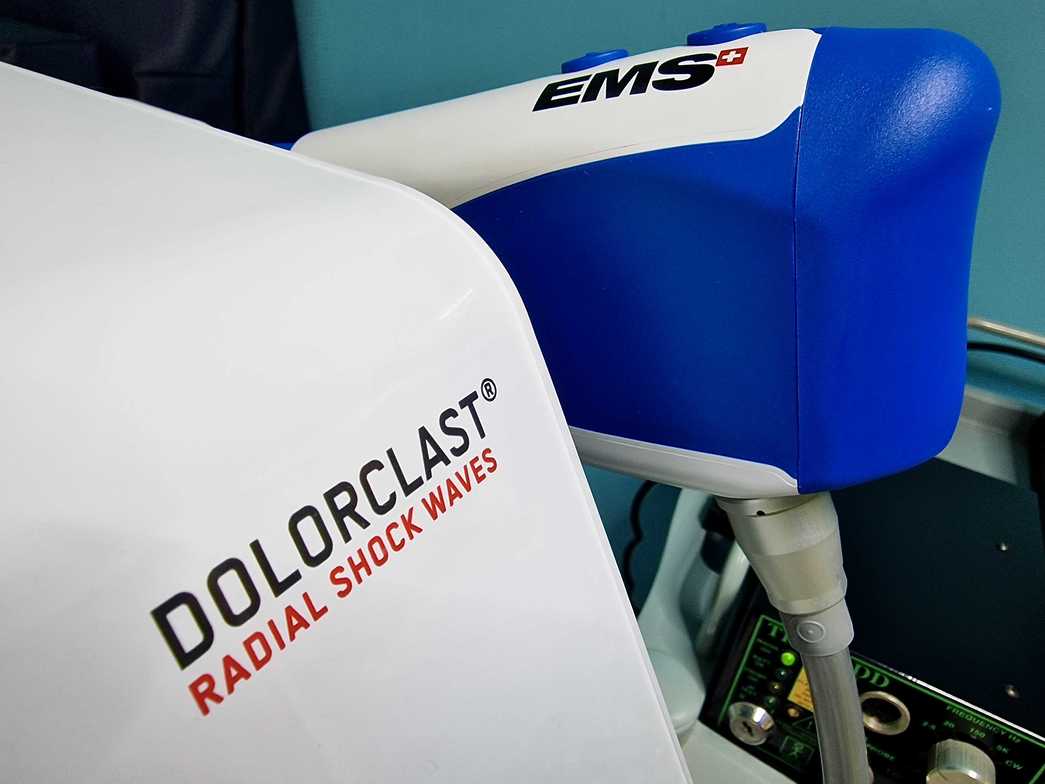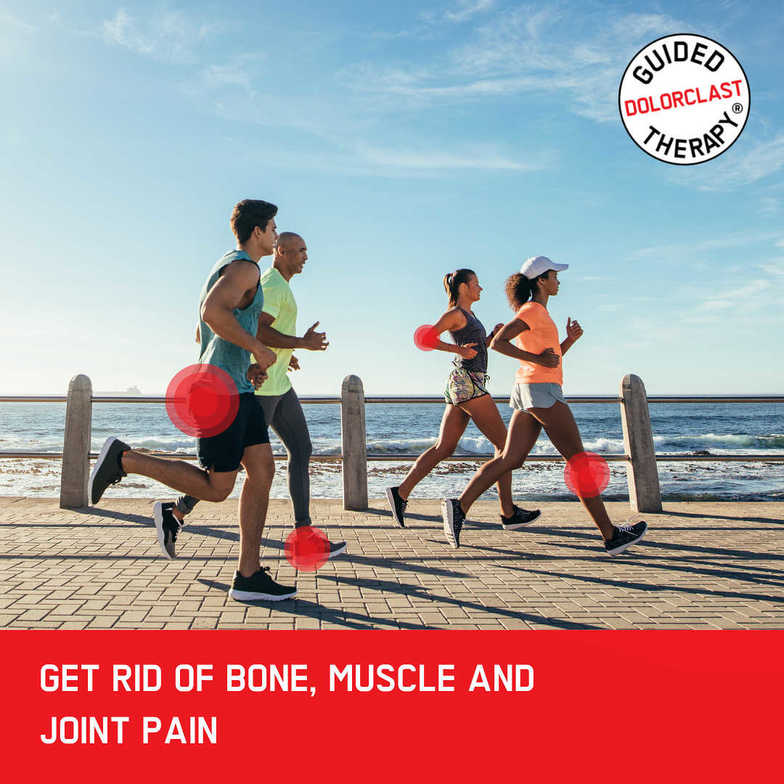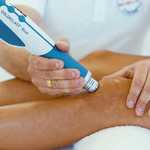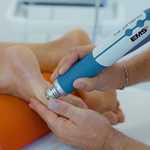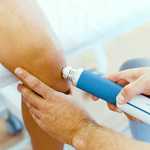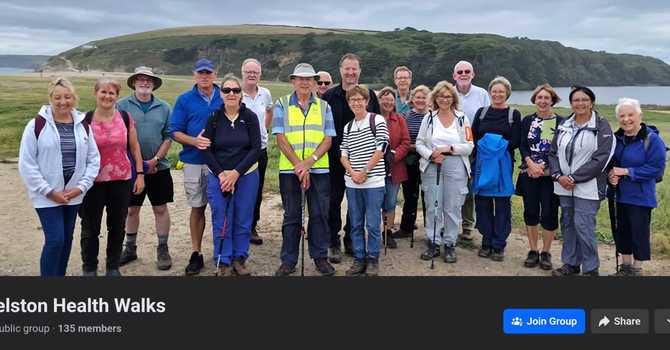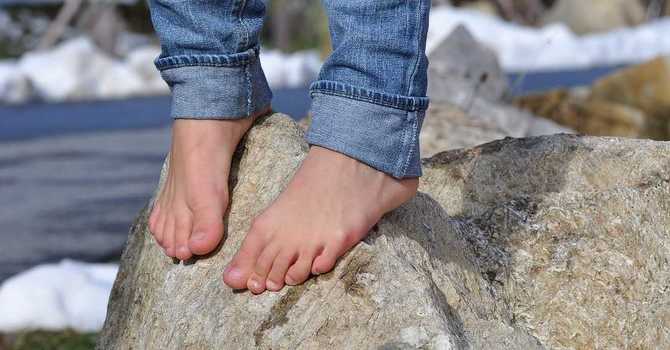Therapeutic shock waves:
the sound of healing
Many people suffering from musculoskeletal disorders believe that surgery and a lengthy recovery are unavoidable. Most have never heard about non-invasive methods of treating such disorders.
Swiss DolorClast Radial Shock Wave Therapy is a clinically proven method of treating musculoskeletal disorders, supported by scientific randomised control clinical trials.
But how are these acoustic shockwaves created?
Let's start with some basic definitions: shock waves are mechanical acoustic waves characterised by propagating disturbance that moves faster than the local speed of sound in the medium. It is associated with a sudden rise from ambient pressure to its maximum pressure. In general, extracorporeal shock waves are characterised by the development of pressure over time.
Radial Extra Corporeal Shock Waves are generated via a pneumatic system within the Hand-piece of the DolorClast Radial Shock Wave device. Using compressed air, a projectile is accelerated to a high-speed in order to strike the back of the transmitter, which is held over the treated area. Generated kinetic energy is converted into shock waves, which are transferred to the tissues in a non-invasive fashion thanks to the coupling gel.
Fast pain relief and long-lasting healing - how does the body react to shock waves?
Firstly we need to understand how the sensation of pain is generated in the human body?
First, it is detected as sensory information by nociceptors located on free nerve endings; then, it is carried via A-delta and group C nerve fibres from the periphery to the dorsal horn of the spinal cord. This transmission of pain information is mediated by a number of neurotransmitters. Here, we will focus on one of them: Substance P.
During the shockwave therapy, an increased level of Substance P is also what is responsible for any discomfort or unpleasant sensations. Substance P and other neuropeptides are released from the peripheral ends of sensory nerve fibres and lead to a slight sensation of pain. Herein lies the answer! The longer the C-fibers are activated with shockwaves, the lower the concentration of this neuropeptide within the treated area. As a result, the nociceptors are no longer sufficiently stimulated. Less Substance P in the tissue leads to pain relief (because the transmission between injury and brain is ineffective) and inhibits the neurogenic inflammation process.
Shockwave therapy acts on the musculoskeletal system via molecular and cellular mechanisms. First of all, it lowers the concentration of Substance P and brings about pain relief. Secondly, it blocks the development of neurogenic inflammation, which plays an important role in the pathogenesis of tendinopathies such as tennis elbow or plantar fasciopathy. Thirdly, it activates the formation of primary muscle cells to repair damaged muscle fibres and increases expression of the following growth factors:
- VEGF (Vascular Endothelial Growth Factor), which plays an important role in angiogenesis. In this way, new blood vessels are formed to accelerate tissue healing.
- PCNA (Proliferating Cell Nuclear Antigen) and eNOS (Endothelial Nitric Oxide Synthase), which are growth factors responsible for stimulating blood circulation. A better flow of oxygenated blood promotes tissue regeneration.
In summary:
What is extracorporeal radial shockwave therapy - RSWT?
Extracorporeal Radial Shockwave Therapy is a series of high-energy impulses to the affected area.
RSWT is a form of regenerative medicine
How does it work?
- Treatment produces an inflammatory response. The body responds by increasing metabolic activity around the site of pain. This stimulates and accelerates the healing process.
- Shockwave breaks down scar tissue and possibly calcification as well
- Transmission of pain is blocked by elimination of a neurotransmitter called Substance P.
What are the benefits of Shockwave?
Shockwave therapy stimulates the body's natural healing process. There is actually an immediate reduction of pain and improved ease of movement. Secondary effects are minor. Shockwave therapy may also reduce the chance of further surgery.
How long does the treatment last?
4,000 impulses are delivered per session, which last approximately 3-5 minutes.
How many treatments will I need?
Research Protocols state that three treatments are necessary at weekly intervals; however additional treatments may be needed if authorised by your Podiatrist.
Does the treatment hurt?
You may feel some discomfort or pain. If you cannot tolerate the treatment, then settings can be adjusted.
What about after the treatment?
Generally there will be immediate pain relief, but there may be some discomfort experienced 2-4 hours after.
What should I do if I am in pain after the treatment?
The shockwave will trigger an inflammatory response, for this reason, we advise against using anti-inflammatory medications. Do not use ice as we want the body to trigger the natural healing response. The pain should subside within 24 hours.
Use Paracetamol if needed as long as you able to take this medication.
What if it feels good after the treatment?
Even if it feels good, we would advise you to take it easy & rest.
What if it doesn't work for me?
Although the immediate to short-term effects alone are excellent, the long-term effects of shockwave therapy can take up to 4-6 months. If you still have problems consult your Podiatrist as additional treatments may be required, or an alternative treatment may be necessary.


